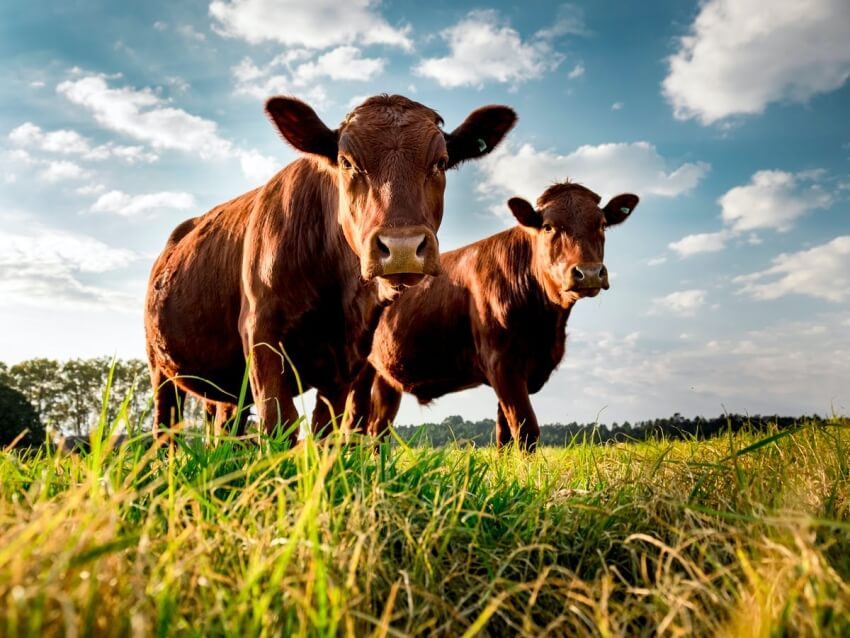
Cattle marketing in Namibia has experienced a significant surge in response to the prevailing drought conditions, according to Agribank’s monthly market watch report for April. The report highlights a 49% increase in the total number of cattle marketed in March 2023, reaching 22,052 compared to 14,848 in the prior month. This spike in cattle marketing activities is observed across various sectors, with live exports recording an impressive triple-digit growth of 103% to 8,142. Farmers are compelled to sell their livestock due to inconsistent rainfall and vegetation degradation, as they aim to mitigate potential stock losses caused by the ongoing drought. This article examines the impacts of drought on cattle marketing, the trends in sheep and goat marketing, and the local agricultural market dynamics in Namibia.
Cattle Marketing Surge and Implications
The upsurge in cattle marketing activities is a direct response to the adverse effects of drought, which has led to vegetation degradation and reduced grazing resources. Farmers are reducing their herd sizes and generating income to offset the costs of managing livestock during the dry season. The number of live exports and slaughter cattle is expected to continue rising, potentially leading to declining livestock prices. This trend reflects the proactive measures taken by farmers to conserve resources and adapt to the challenging conditions imposed by the drought.
Sheep Marketing Trends
In addition to the surge in cattle marketing, the number of sheep marketed in March 2023 also witnessed a significant increase. The report reveals a 91% rise in the number of sheep marketed, reaching 90,380 compared to 47,397 in the previous month. This growth is primarily attributed to the surge in live sheep exports to South Africa, which experienced a 95% increase to 48,700 in March 2023. The demand for sheep exports underscores the importance of diversifying income streams for farmers and capitalizing on export opportunities.
Goat Marketing Challenges
While cattle and sheep marketing experienced substantial growth, the report indicates a slight decline in goat marketing. The number of goats marketed decreased from 3,682 in the prior month to 3,638 in March 2023. Goats are known for their drought resistance and browsing habits, which make them less reliant on grasslands for feeding. Consequently, farmers are more reluctant to sell their goats during challenging periods, leading to a decrease in goat marketing activities.
Local Agricultural Market Dynamics
The report also sheds light on the dynamics of the local agricultural market in Namibia. Poultry farming has been affected by bird flu outbreaks in major trading nations, leading to import restrictions on poultry products from Chile and Argentina. This situation has created an opportunity for local poultry farmers to intensify production and meet the domestic demand for poultry products. Similarly, the Namibian Agronomic Board has prioritized local uptake of produce through import and border restrictions. This approach benefits local producers by providing them with a market for their produce and encourages diversification in farming operations.
Vegetable Production Forecast
The April-August 2023 vegetable production forecast report highlights the surplus and shortage of specific controlled products during the forecasted period. Butternut and pumpkins were in surplus in April 2023, while gem squashes, onions, and potatoes experienced shortages. The demand for potatoes remains high, signaling an opportunity for farmers to increase local potato production and cater to the domestic market’s needs.
The drought conditions in Namibia have had a significant impact on the agricultural sector, particularly in cattle marketing. Farmers have been compelled to reduce their herds and engage in cattle marketing activities to mitigate potential stock losses. The surge in cattle marketing is mirrored by an increase in sheep marketing, driven by live exports to South Africa. However, goat marketing has experienced a slight decline due to goats’ natural resilience to drought conditions. Meanwhile, the local agricultural market has seen opportunities for poultry farmers to meet domestic demand and a need for increased local potato production. As Namibian farmers navigate the challenges posed by drought, their adaptive strategies and market awareness play crucial roles in sustaining the agricultural sector and ensuring food security.



















Leave a Reply